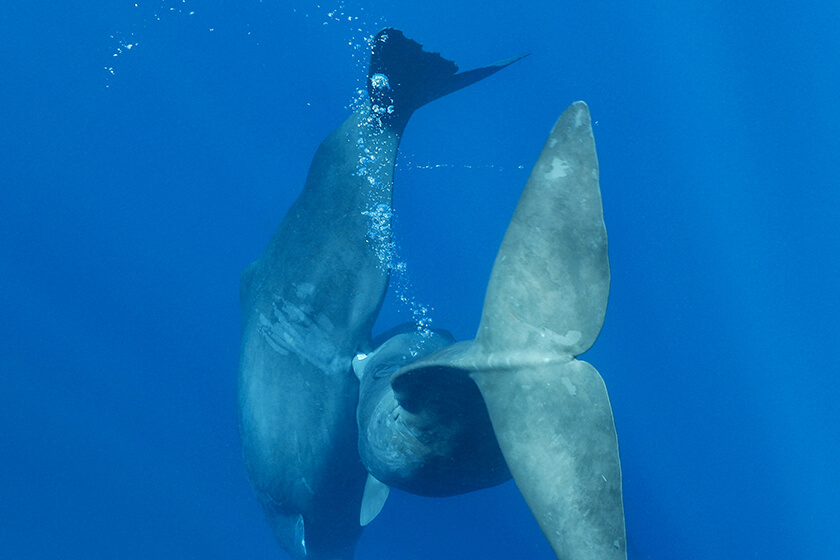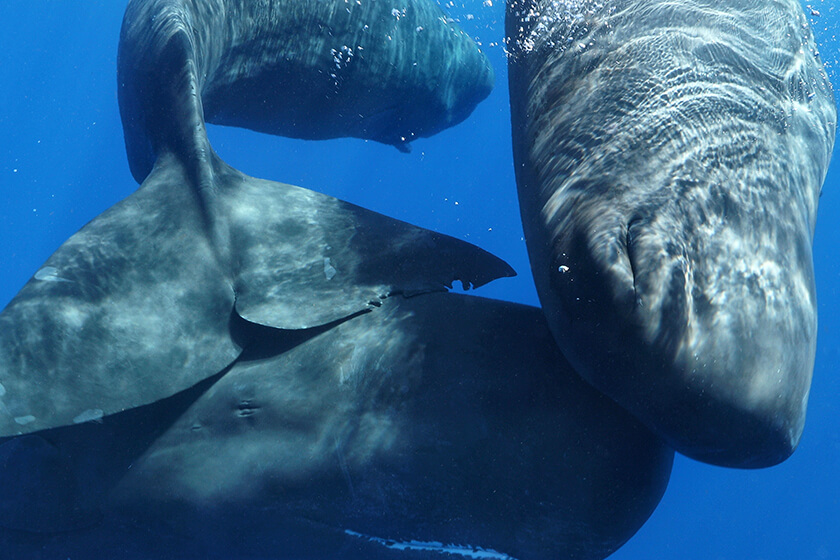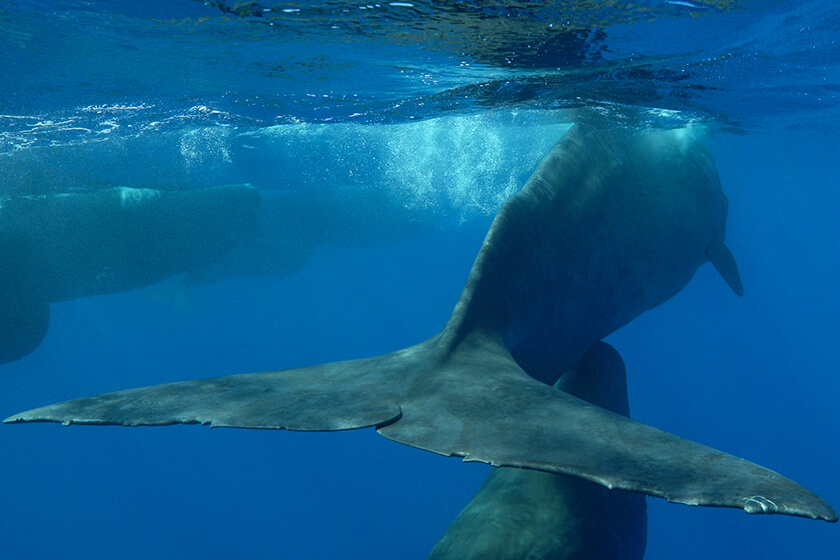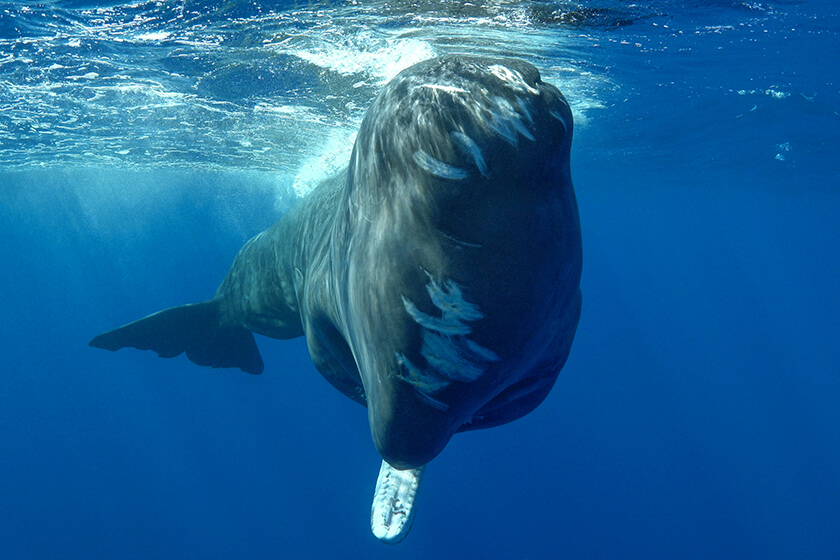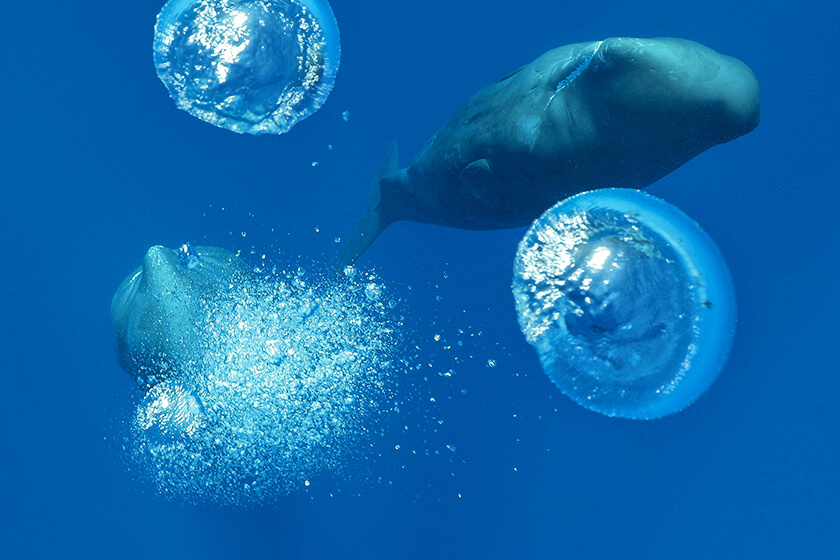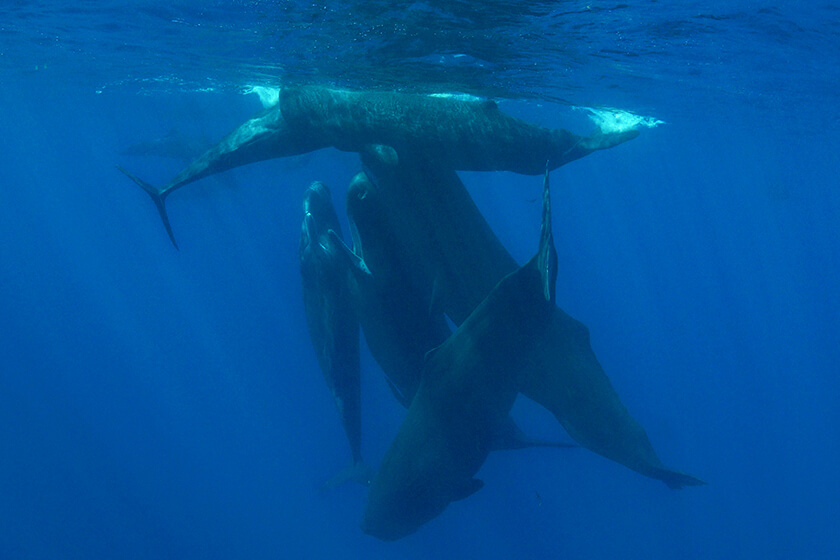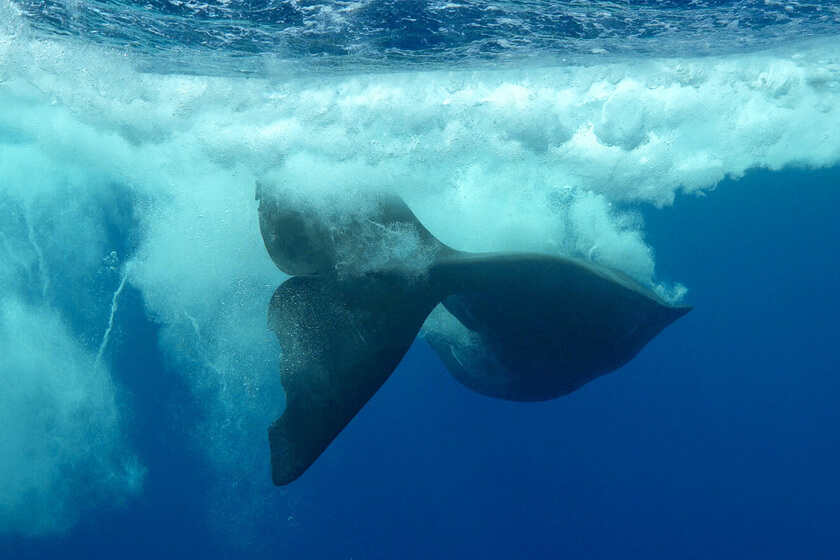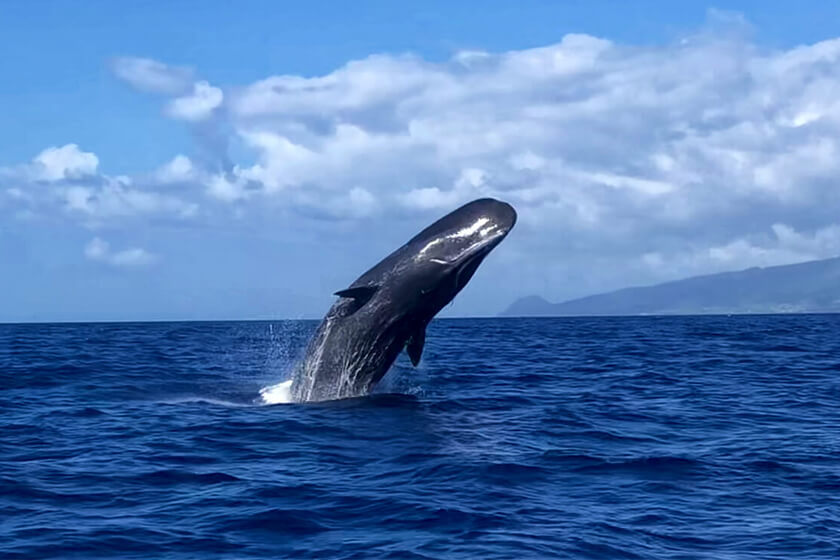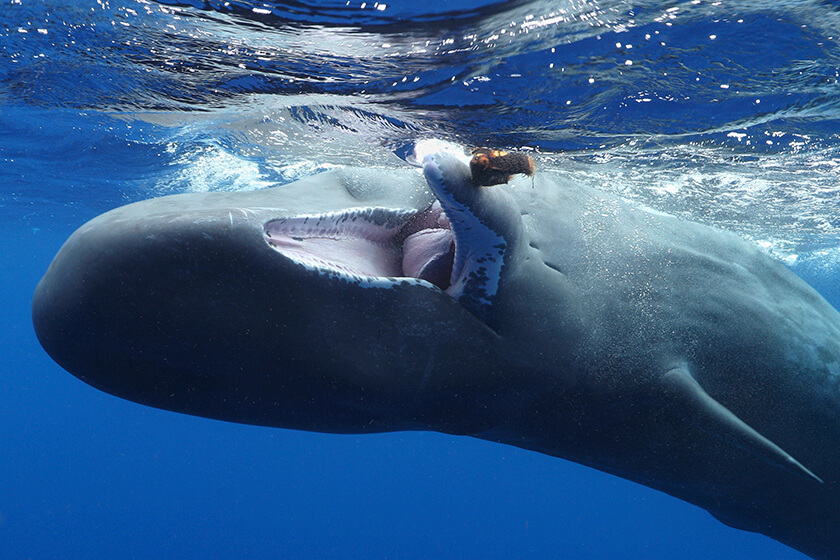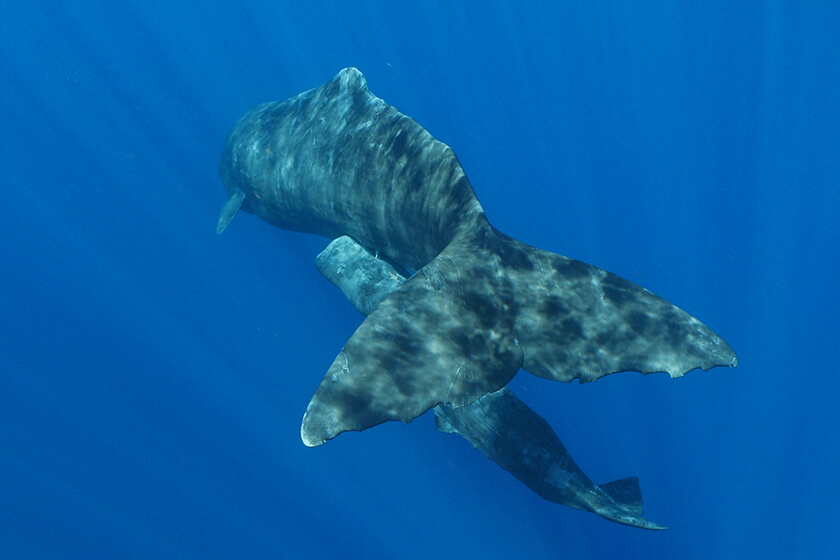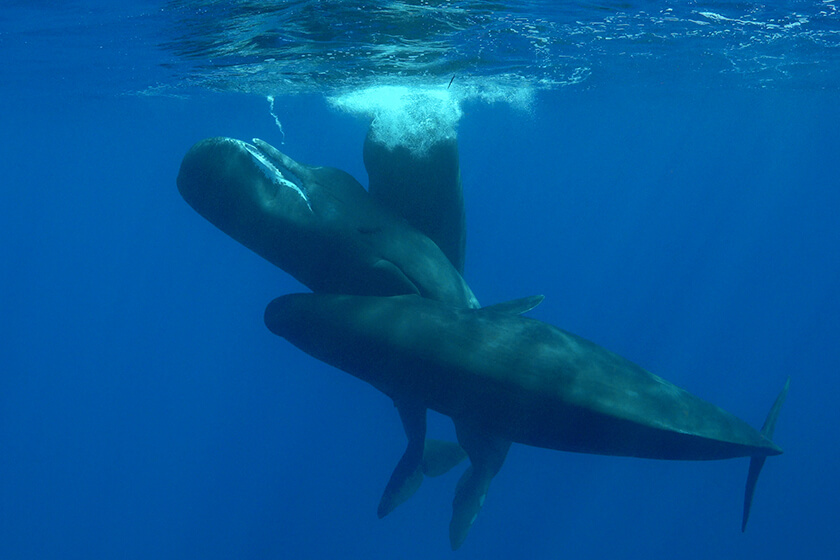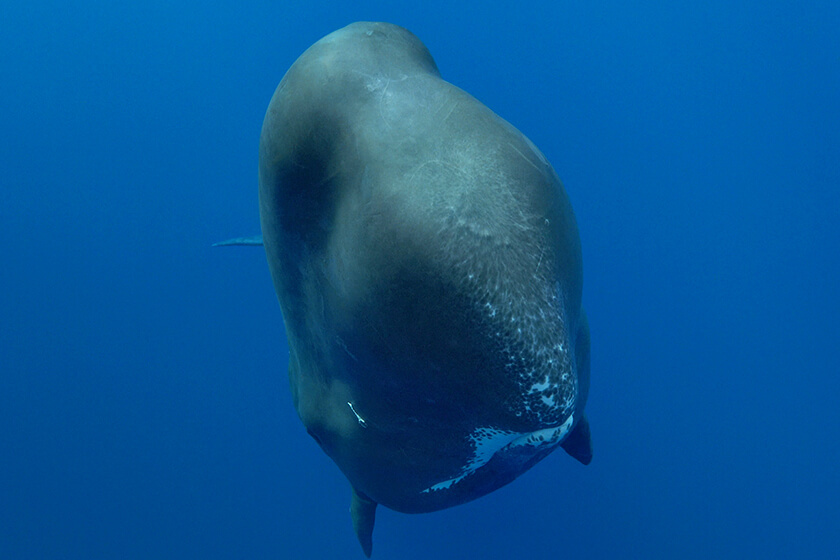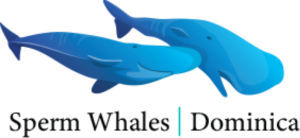Behaviors: Traveling
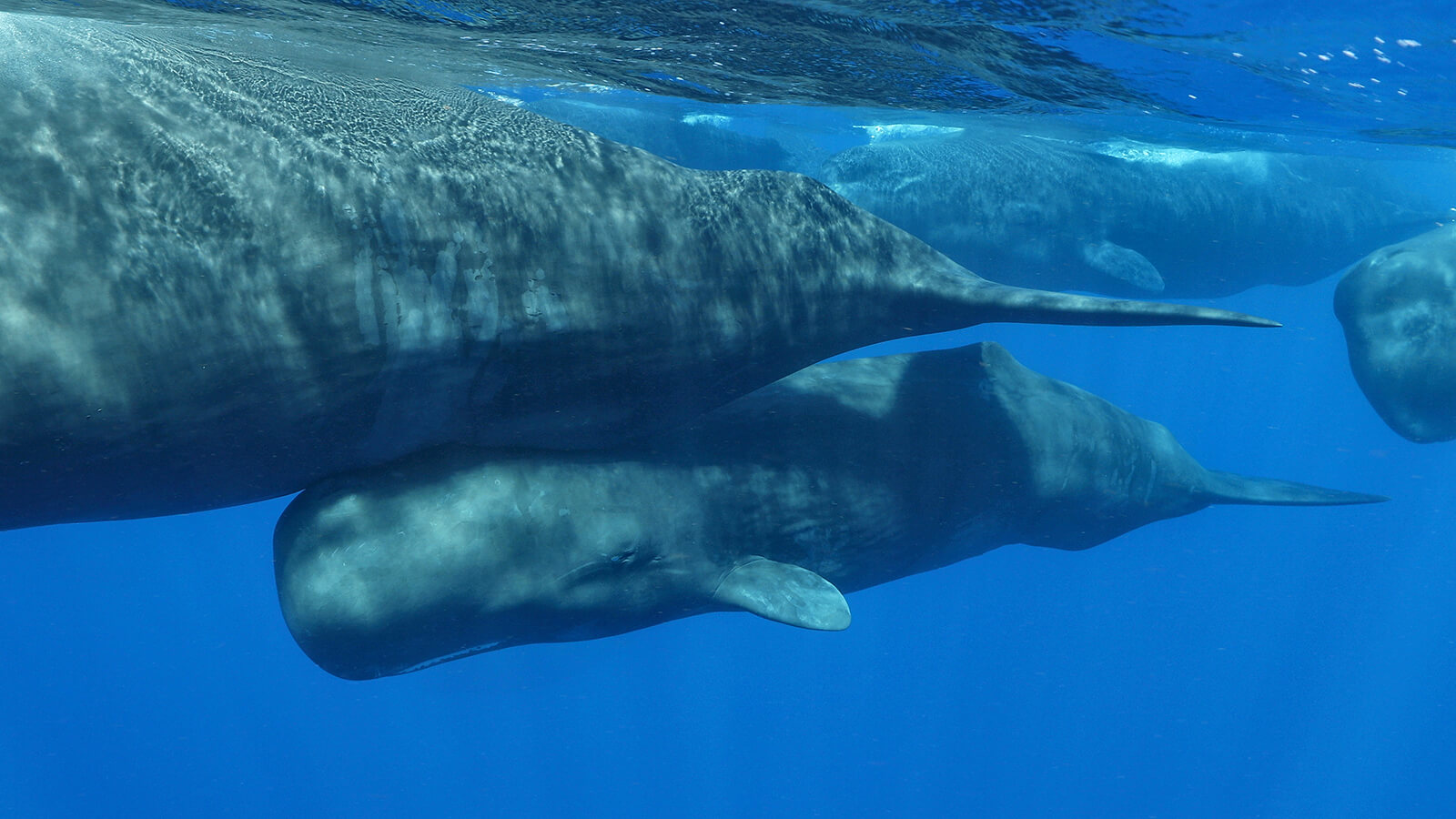
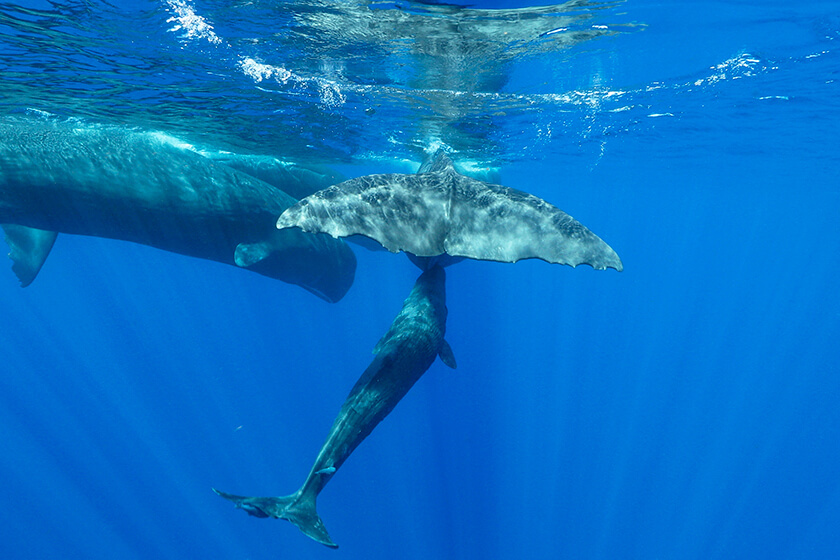
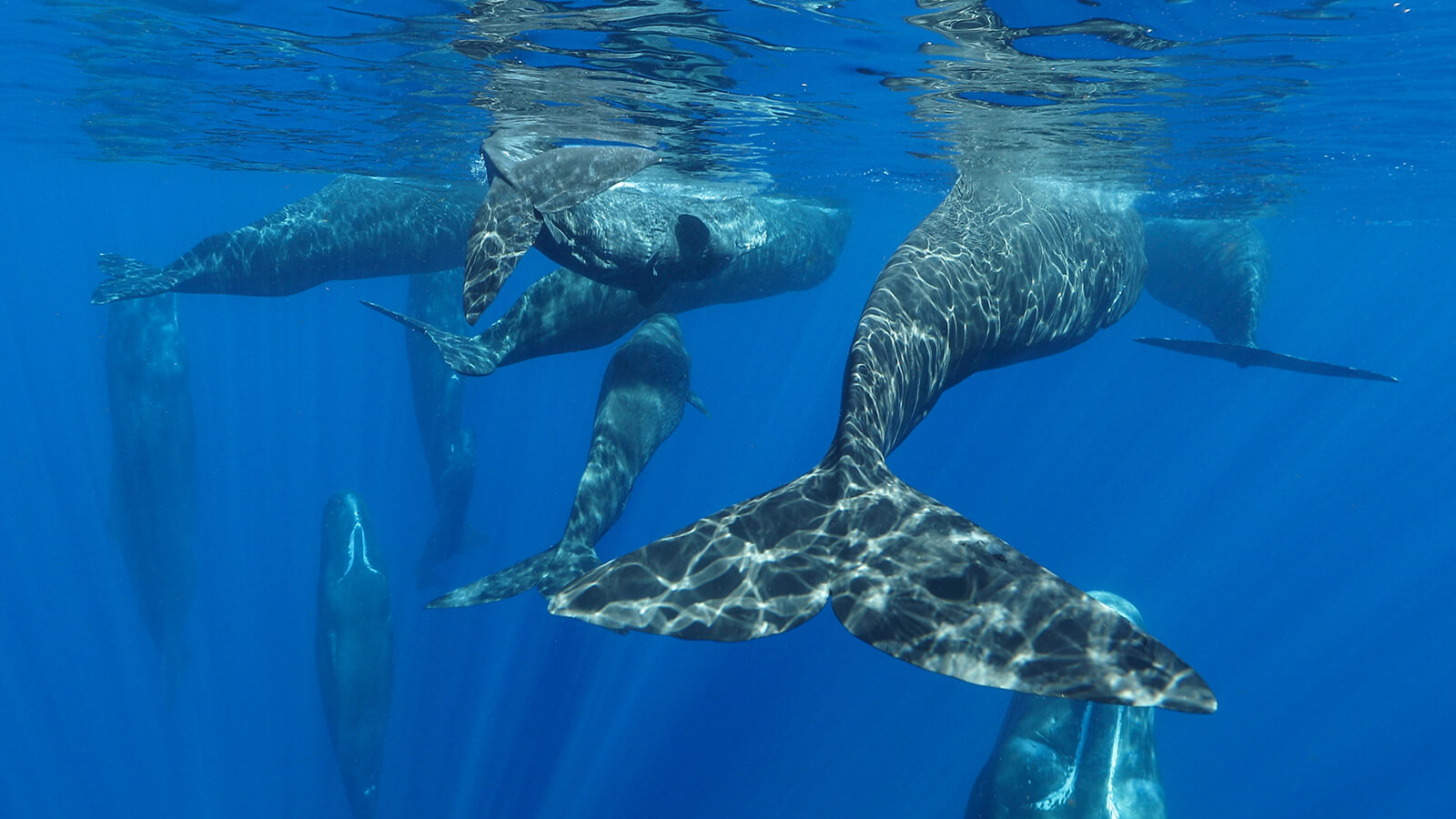
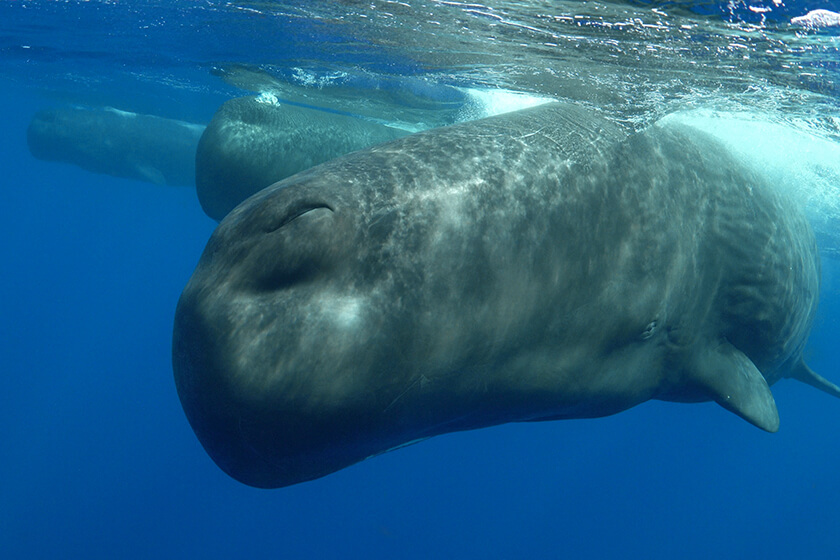
The social units make use of the resources throughout the area, moving readily between islands at speeds of about 3 mph (4 -5 kph) whether they are cruising at the surface or foraging underwater. They are capable of swimming 30 miles (50 km) in a day, and can easily cover the distances between any of the five islands in a matter of days.
We typically see families from the larger of the two Eastern Caribbean clans along the coast of Dominica. Foraging strategies are culturally inherited among sperm whales and we believe that social units pass information specifying range preferences between generations. We therefore see certain social groups in this region more consistently than others.
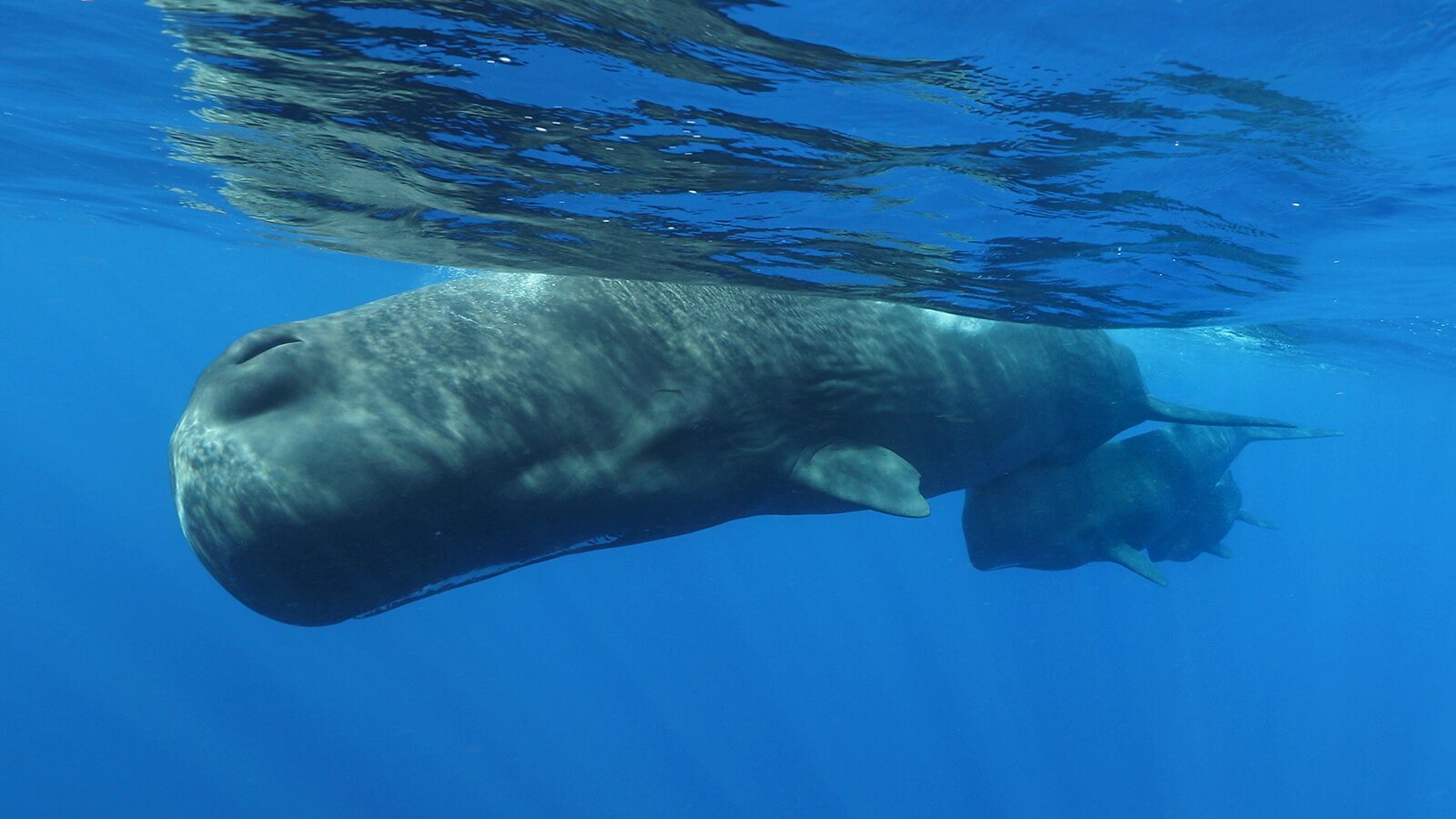
Our observation period is limited to daylight hours and we find the whales as they make their way to or from the island, and when moving parallel to the coast performing various activities. It is speculated that they travel major distances between islands at night, however this is unsubstantiated.
We regularly observe individuals and social units in different modes of travel along the Dominican coastline. They may be swimming en route to a feeding location, relocating between sleep cycles or socialization periods, or swimming offshore to avoid predators. The whales swim as a group and may be loosely spread out, however they are always within auditory range of one another. Calves are accompanied by one or more adults who remain in closer proximity.
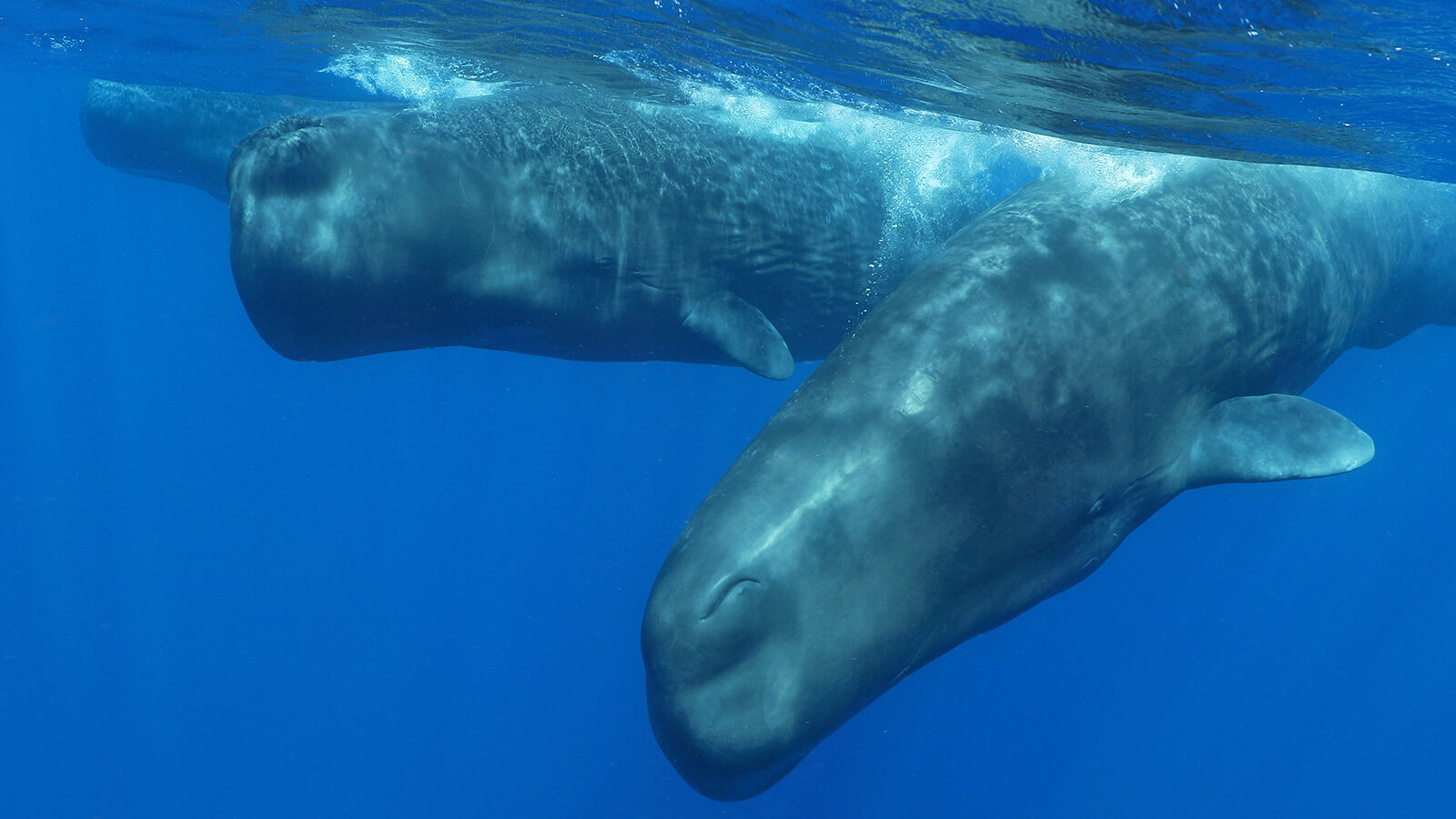
The pace of travel for social units is limited by the speed of their youngest members. To compensate for this potential liability, the whales have developed adaptive measures to increase the speed and endurance of their calves. When the groups travel long distances, adults swim in tandem with calves in a specific manner, often but not exclusively in mother-calf pairs.
As the pairs move in unison, each calf assumes a standard position with its rostrum tucked into the genital area of the adult. The curvature of the adult’s genital region forms a perfect groove for the calf’s nose to fit into, providing not only protection and comfort but also a hydrodynamic advantage as the calf is pulled along within the slipstream created by the larger and stronger adult. When the calves need to breathe, they slide out from under the adult to surface for a quick breath before resuming their traveling position.
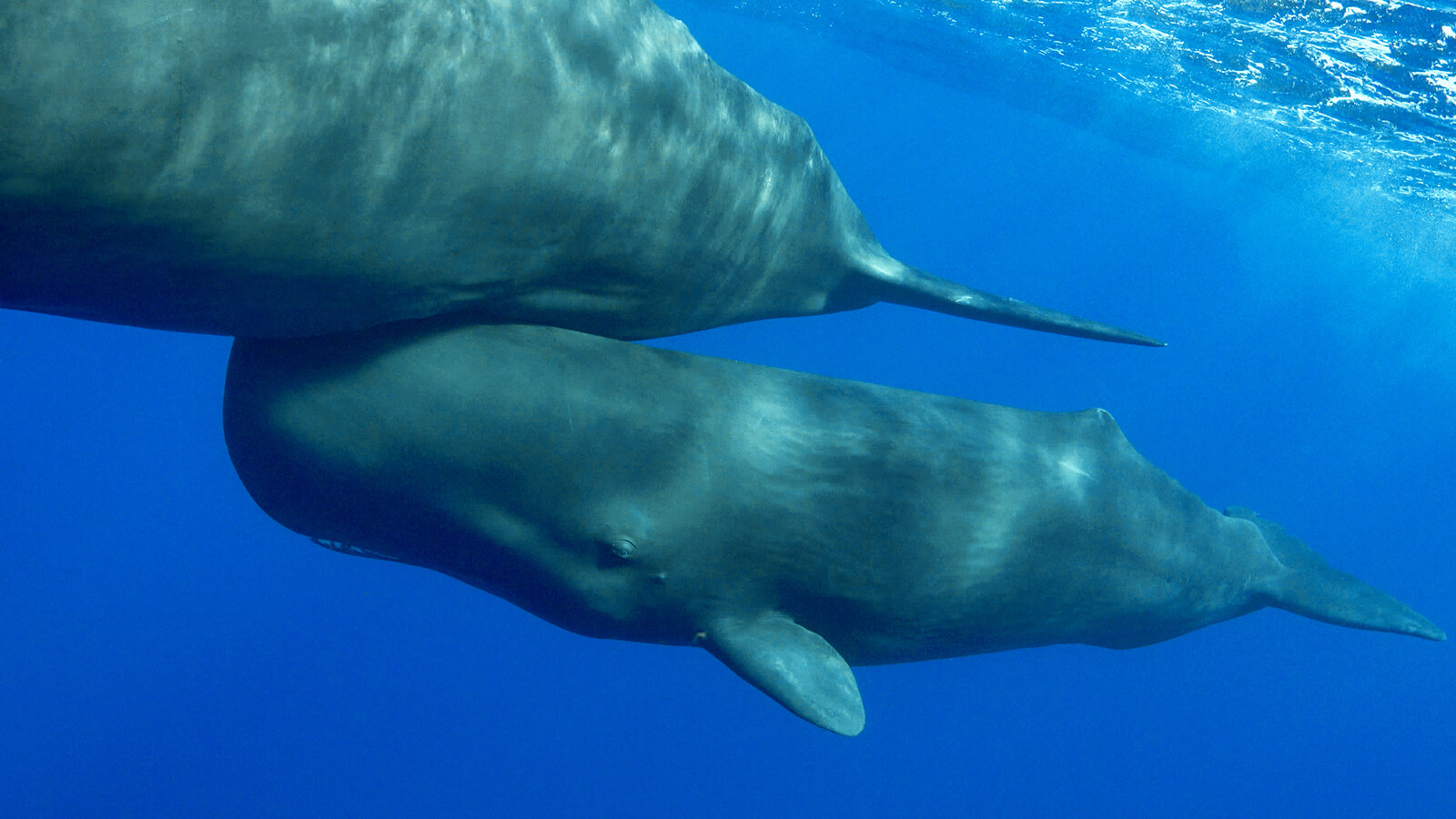
We have been able to film several social units in various rhythms of traveling. We have documented them swimming solo, in pairs, and as groups in loose formation at slow, medium and rapid paces.


